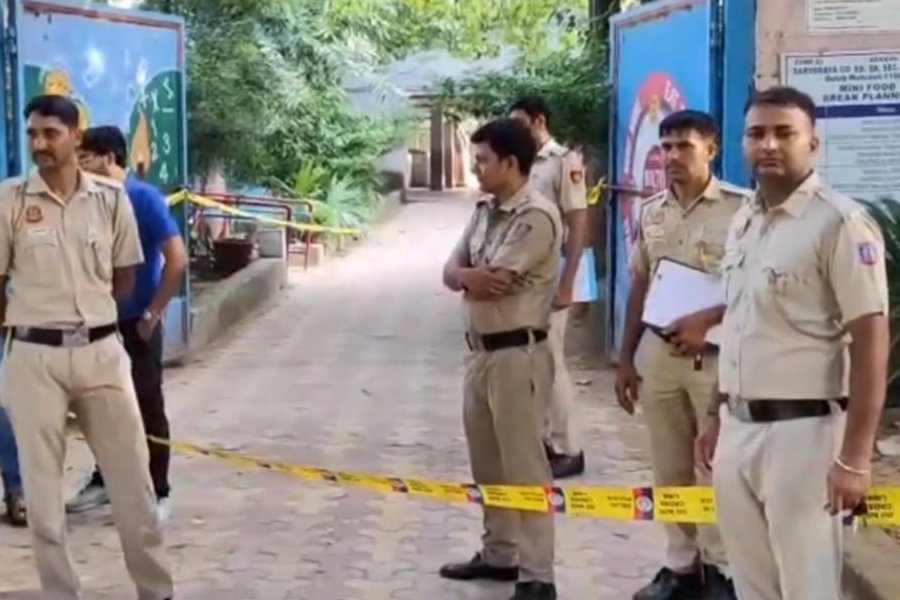 |
| BJP activists in Mumbai celebrate the execution of Kasab on Wednesday. (AFP) |
New Delhi, Nov. 21: Ajmal Kasab’s final moments of life as he hung from a rope this morning in Yerwada jail in Pune remain shrouded in secrecy, but a top police source has claimed that he took about 10 minutes to die.
The claim by a senior police officer would imply that Kasab’s final moments fell in line with the statistics of judicial hangings that suggest that life is more likely to ebb over several minutes rather than end in seconds.
A judicial hanging, carried out in a textbook manner, is expected to cause almost instant death by the dislocation of the third and the fourth cervical vertebrae or a relatively slower death by asphyxiation.
Experts familiar with the medical details of hangings say the expected “hangman’s fracture” typically occurs only in a small proportion of cases and most of the deaths are caused by strangulation — the victim is choked to death.
“Death by strangulation can take several minutes — usually under five minutes,” said Rajesh Pande, a critical care specialist in New Delhi, and secretary of the Indian Society of Critical Care Medicine, National Capital Region branch.
A police officer told The Telegraph that Kasab was hung at 7.30am and was dead by 7.40am.
The mechanical aspects of judicial hanging today are guided by steady refinements that evolved decades ago — a prisoner’s weight in pounds is taken into account to compute the length of the drop beneath a trapdoor.
Prison authorities calculated that Kasab, who was 60kg, would require a drop of seven feet. The length of the drop is critical — a drop too short may result in slow strangulation while a drop too long may result in the head being wrenched off.
In 1992, two UK forensic pathologists analysed 34 judicial hangings and observed that the traditional hangman’s fracture occurred in six cases, while they documented cervical fractures in 48 per cent of the cases.
In their research report published in the journal Forensic Science International, Ryk James and Rachel Nasmyth-Jones said strangulation or asphyxia also played a role in 48 per cent of the deaths and were entirely responsible for 10 per cent of the cases.
The pathologists said that while the long-drop method of hanging caused death even without the intended cervical fractures, data suggest that it need not be “almost instantaneous”.
“A more humane method of execution would be lethal injection,” Pande said. Several states in the US, the Philippines and Guatemala are among countries that now use lethal injection to execute convicts.
In 1987, India’s Law Commission had conducted a nationwide consultation on the modes of execution and recommended that the country’s criminal procedure codes be revised to provide an alternative mode of execution through lethal injection.
The recommendations are, however, not binding on the government.
In a lethal-injection procedure, three chemicals are used in sequence to bring about what appears to be a painless death. The first chemical, usually sodium thiopental, puts the person to sleep in about a minute. The second chemical is a muscle relaxant that prevents the diaphragm muscles from breathing, while the third injection, potassium chloride, stops the heart. In the US, the procedure has been automated with machines delivering the lethal injections.











